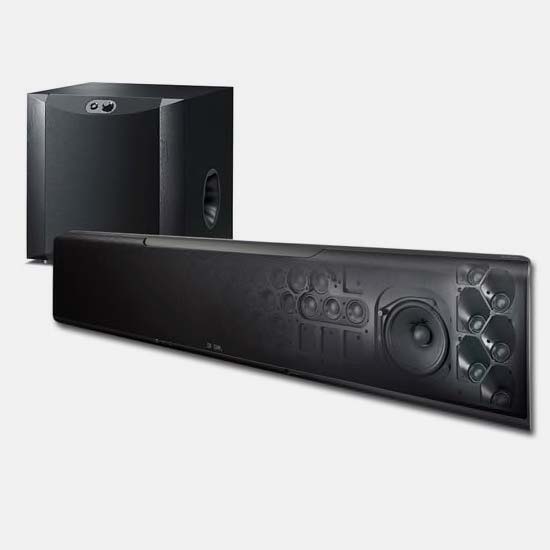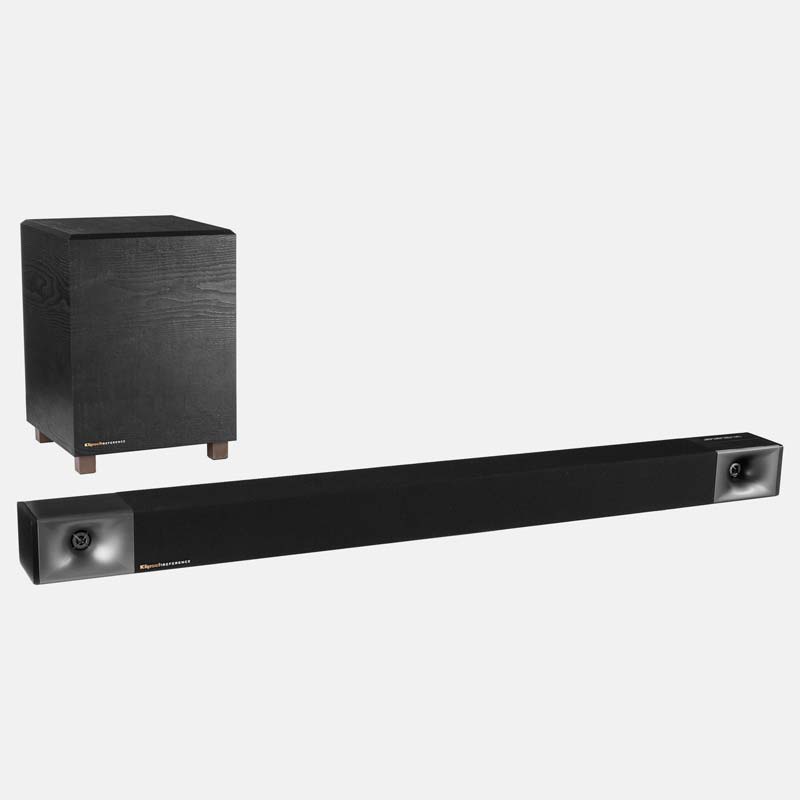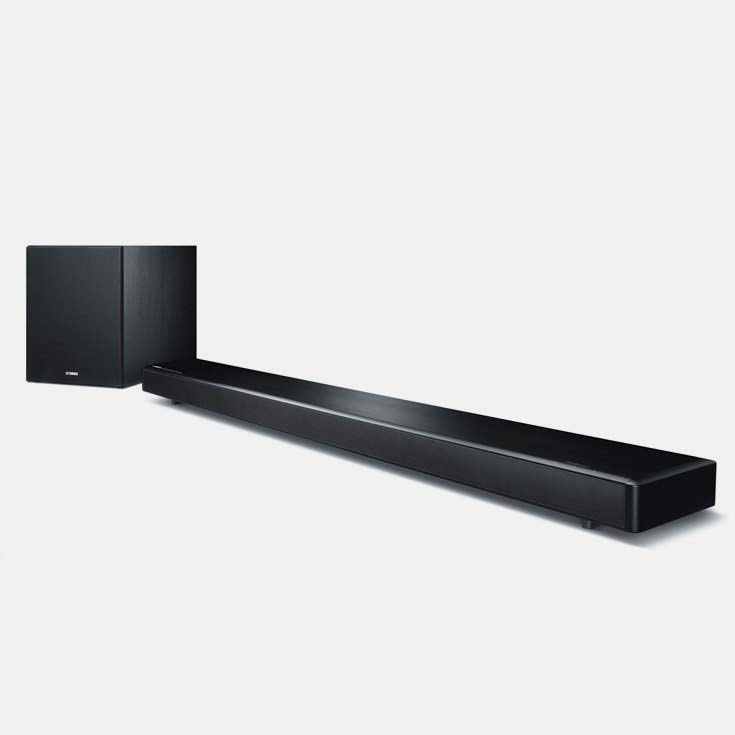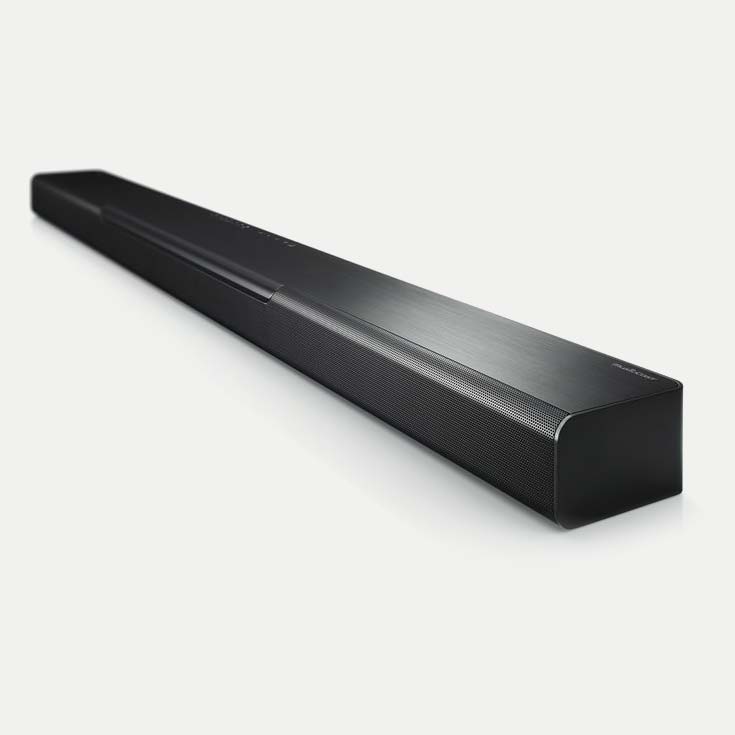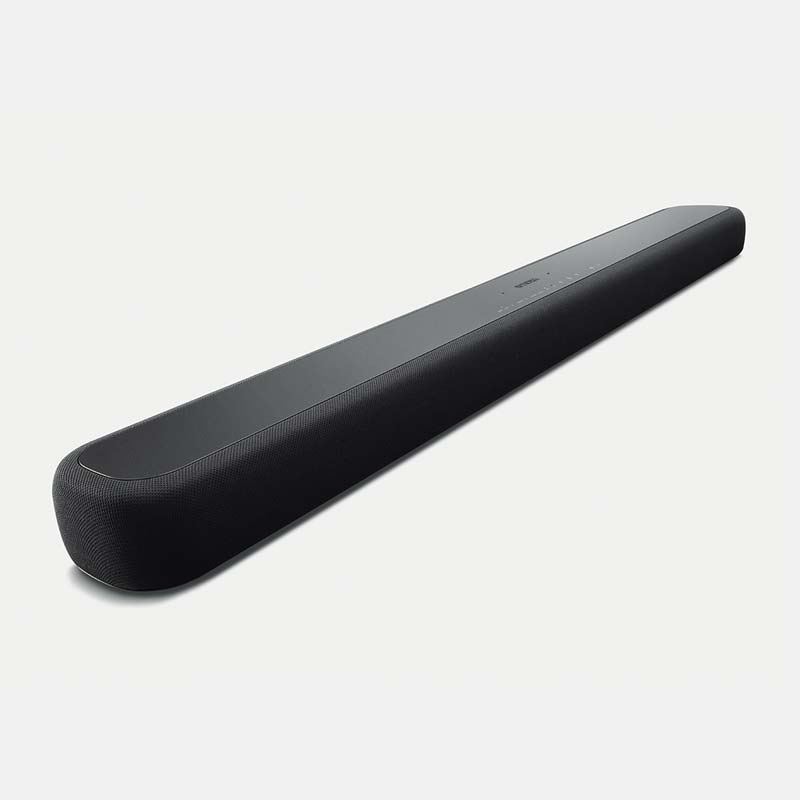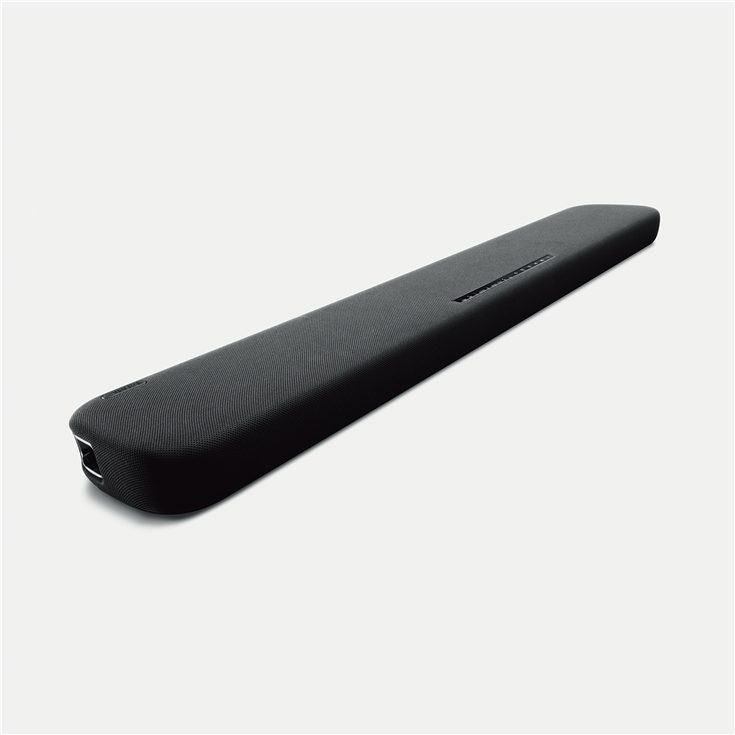Why do you need a sound bar?
SIMPLE
TV speakers just aren’t very good. Often, they fire sound downwards, not towards your seat! What’s more, the speakers are typically the size of a 20 cent coin… and what do you get for 20 cents these days?
THAT’S WHERE A SOUND BAR COMES IN
Sound bars are a discrete solution to poor sound, offering powerful, clear audio that can bring you right into a movies soundtrack, let you enjoy music and help you hear the dialogue in TV shows!
They’re simple to use, offer modern styling and they get rid of all those messy speaker wires throughout your living room.
What type of sound bar should I buy?
Here’s a quick guide to explain the different types of Sound Bars on the market.
All-in-one Sound Bars with built in bass drivers
These compact units are perfect for smaller rooms, they will offer clear dialogue and an experience that far exceeds your standard TV speakers.
Sound Bars with Wireless Subwoofers
This popular choice offers a great way to bring a dynamic soundtrack from your favourite movie into your living room! The subwoofer ‘brings the thunder’ for gaming and movies, while the sound bar keeps your music and TV dialogue crystal clear
Sound Bars with WiFi Rear Speakers
This popular choice offers a great way to bring a dynamic soundtrack from your favourite movie into your living room! The subwoofer ‘brings the thunder’ for gaming and movies, while the sound bar keeps your music and TV dialogue crystal clear
Sound Projectors
Developed and perfected by Yamaha, Sound Projectors use multiple drivers to steer sound around the room, bouncing off the walls to surround you with sound!
They need to be heard to be believed!
What’s more – the YSP5600 from Yamaha utilises 46 built-in speakers, with 46 matching amplifiers to also incorporate Dolby ATMOS and DTS:X, giving you an immersive audio experience like no other.
For open plan homes, consider a bar with WiFi rear speakers.
Where should I place my sound bar?
For the best results, position your sound bar beneath your screen.
From there, you can either: Hang it on the wall, place it on a cabinet, place it inside a cabinet.
Wall Mounting
If you’re mounting on the wall, you’ll need to ensure you choose a bar that can be hung easily.
Bars like Yamaha’s YAS-109 can be mounted vertically to sit flush to the wall – perfect if you want to keep everything looking as sleek as possible. Some bars require a separate bracket in order to mount them, make sure you factor this in.
On a cabinet
If the bar is being placed on a cabinet under the TV, make sure your choice of bar is low enough to not obscure the TV’s IR sensor.
A good example of a slim line sound bar is the YSP-2700 from Yamaha.
TIP: If it won’t fit under the TV without blocking the panel, try popping your television on a stand to elevate it slightly.
Inside a cabinet
If the bar is being placed within a shelf of a cabinet, make sure the bar is forward ported or sealed.
Basically, many bars have ports to help improve their low frequency performance, resulting in better bass, however if the ports point backwards or to the side, placing the bar inside a cavity can make the audio sound muddy!
If you’re looking to place your new sound bar in a cavity, look at a forward firing bar or a ‘sealed’ sound bar like Klipsch’s Bar 40 or Yamaha’s YSP2700.
Diggin’ Deep – BIG Bass
Where do you place your subwoofer?
With slimmer sound bars, it’s best to keep your subwoofer as central to the sound bar as possible.
Larger bars such as the Yamaha YSP5600 allow you to place your subwoofer anywhere in the room. You can experiment with the placement – and don’t forget, run its room calibration microphone to ensure you get the best Dolby ATMOS and DTS:X sound possible!
Key features
Surround Sound
Surround sound capabilities come in two varieties
- Sound Projectors: A technology pioneered by Yamaha that utilises multiple, compact drivers to steer sound effects around the room to create a surround sound environment. This does away for the need of extra speakers and cabling.
- WiFi Rear Speakers: A pair of extra speakers placed behind your listening position will offer an immersive experience that can only be bettered by a full home cinema speaker and amplifier system. However, the rear speakers that work with the Yamaha MusicCast Bar 400 and Klipsch Bar 48 only need to plug into power – doing away with messy speaker wire!
Multi-room playback
The streaming capabilities of a MusicCast sound bar from Yamaha can make your new sound bar the hub of a smart home, or be a simple way to add an extra zone to your existing Yamaha multi-room setup.
MusicCast can share whatever you’re listening to, through to other MusicCast products in your home. It’s a simple way to have sound playing throughout your home. Whether it’s net radio, Deezer, Tidal, Spotify, Bluetooth, HDMI sources or free-to-air TV audio, you can share it all with MusicCast!
Learn more about how to setup MusicCast here
Voice Control
Sound bars now offer Amazon’s Alexa voice control. The best results come from bars like Yamaha’s YAS-109 and YAS-209 as they have built in microphones, meaning you can talk to the bar naturally and enjoy the convenient voice features offered by Alexa.
Change volume, play music and more – all without picking up your remote!
